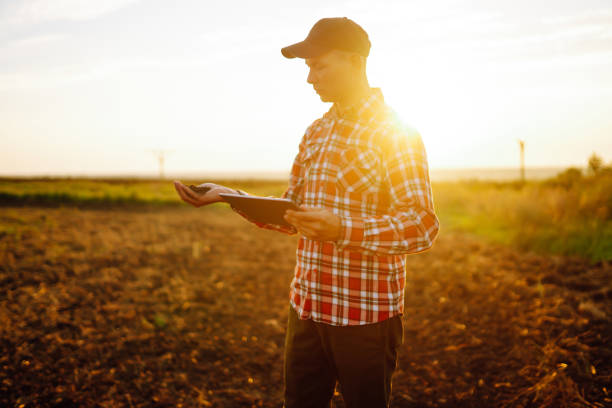Table of Contents
- Introduction
- Precision Forestry with Drones
- Biochar Soil Amendment
- Integrated Pest Management
- Smart Irrigation Systems
- Robotic Pruning Tools
- Real-Time Tree Health Monitoring
- Sustainable Landscaping Practices
- Conclusion
Introduction
Thriving landscapes rely on scientifically informed care, innovative technologies, and practices designed for sustainability. Gone are the days when tree maintenance was limited to pruning dead branches and occasionally watering; today’s arborists leverage advanced methods to deliver healthier landscapes. Embracing eco-friendly strategies, improved diagnostics, and precise interventions, modern tree care sets a new standard for landscape management. For projects requiring land clearing or site preparation, consulting knowledgeable excavation contractors can help ensure a safe and efficient process before planting or large-scale landscape enhancements.
The holistic approach to tree care emphasizes the protection and vitality of each tree, focusing on the intricate interdependencies between soil, water usage, pest management, cutting-edge monitoring, and biodiversity. As urbanization advances and climate patterns shift, proactive care and innovative technologies are essential for creating beautiful and resilient landscapes.
Precision Forestry with Drones
Drones have transformed how arborists and land managers approach tree care. With unmanned aerial vehicles supplying real-time, high-resolution imagery, professionals can rapidly identify tree health issues, survey canopy cover, and spot infestations or diseases. These insights enable targeted interventions, minimize unnecessary removals, and support more informed decisions about pruning or treatment. In forestry and urban settings, drones also help experts access tall or dense tree canopies safely, avoiding the hazards associated with manual inspections. According to The New York Times, drone-based mapping and analytics are enhancing reforestation efforts across the globe.
Biochar Soil Amendment
Biochar is an environmentally conscious soil amendment that is gaining traction in tree care. Created from organic material through pyrolysis, biochar improves soil structure, enhances water retention, and increases beneficial microbial activity. Its porous structure helps retain nutrients and water around tree roots, making trees drought- and stress-resistant. Moreover, biochar sequesters carbon in the soil, making it an appealing solution for those aiming to reduce their landscape’s carbon footprint. According to Smithsonian Magazine, biochar functions as a maximum-security prison for carbon, potentially playing a critical role in climate mitigation.
Integrated Pest Management
Integrated Pest Management (IPM) balances effective pest control and environmental stewardship. Through careful observation, prevention, and using natural predators or targeted treatments, IPM minimizes pesticide usage and supports the natural equilibrium within the landscape. Early pest identification is critical, and timely interventions—like introducing beneficial insects or applying biological controls—reduce damage without disrupting beneficial organisms. By combining cultural, mechanical, and biological tactics, IPM helps trees and ecosystems achieve harmony.
Smart Irrigation Systems
Advancements in irrigation help save water while promoting deep, robust tree root growth. Intelligent irrigation systems use soil moisture sensors, weather predictions, and automated controllers to optimize watering schedules, reducing resource waste and preventing issues like root rot or drought stress. These intelligent systems adapt to shifting weather patterns and seasonal requirements, ensuring trees receive the proper hydration precisely when needed—crucial for newly planted and established trees in changing climates.
Robotic Pruning Tools
Combining robotics with horticulture, robotic pruning tools deliver precise, consistent cuts that improve tree health and structure while reducing worker injury risk. These tools often incorporate smart sensors to identify branches that need removal and access places otherwise dangerous for humans to reach. As their adoption grows, robotic pruning devices speed up maintenance, lower operational hazards, and contribute to longer tree lifespans—especially in commercial or municipal landscapes where efficiency is paramount.
Real-Time Tree Health Monitoring
The Internet of Things (IoT) has revolutionized tree care by providing arborists with continuous, real-time data on key indicators such as soil moisture, nutrient levels, and pest activity. These monitoring systems use embedded sensors at tree roots or within the soil to alert caretakers to developing issues long before they become visible. Armed with instant feedback, professionals and homeowners can respond rapidly, ensuring stressors are addressed before they escalate.
Sustainable Landscaping Practices
Sustainability is a guiding principle of modern tree planting and urban forestry. By selecting native trees and shrubs adapted to local climate and pest pressures, landscapes thrive and contribute to local ecosystems. Native species require less water, naturally resist disease, and nurture wildlife, all while reducing the need for chemical fertilizers or intensive maintenance. Planting in diverse, layered canopies further promotes biodiversity and strengthens environmental resilience.
Conclusion
The future of tree care is rooted in technology, ecology, and sustainability. With advanced monitoring systems, innovative tools, and a focus on soil and water health, modern best practices elevate the beauty and the resilience of urban and natural landscapes. By integrating these innovative methods, everyone from homeowners to city planners can ensure their green spaces are vibrant, sustainable, and prepared for the challenges that lie ahead.



